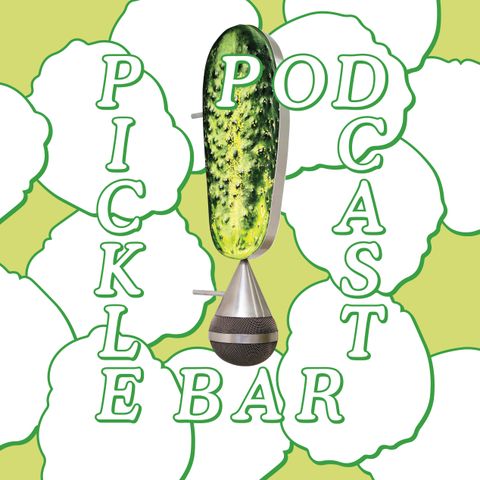Alina Kokoschka: Scripted Ambiguities along the (Arabic) Line
Feb 21, 2022 ·
30m 51s

Download and listen anywhere
Download your favorite episodes and enjoy them, wherever you are! Sign up or log in now to access offline listening.
Description
On the Arabic writing system’s special features and its challenging encounters with the digital realm. The Arabic Script is essential to Islam and Muslim life. Not only is it the...
show more
On the Arabic writing system’s special features and its challenging encounters with the digital realm.
The Arabic Script is essential to Islam and Muslim life. Not only is it the script of a scripture, the holy Qur’an. Itself, as a script, is considered holy and believed to carry great powers. Out of this special place in Islam superb artistic skills in calligraphy have been developed. Islamic calligraphies adorn sacred sites, book covers, or Muslim supermarkets. Sometimes these calligraphies are easily legible, often not. We may see birds and lions and only on second sight discover that lines form not only eyes, ears and paws but words. It is this seemingly hindered legibility that initially caught Alina Kokoschka's attention and made her ask: What does writing mean if it is not legible? Much more than the words to be deciphered. Much more than words can express.
As a writing system, Arabic has also become part of the Linguistic Landscape of cities like Berlin. People come across writings in Arabic on shop signs, products, posters, and brochures on a daily level. But those familiar with Arabic will discover distorted characters, teared words, destroyed meaning. Again: the Arabic writing is barely legible. This time though it is not for religious reasons. Not for reasons of higher cognition. There is a problem and it is digital all along the line. With examples from East Germany to Western China Alina Kokoschka disentangle intertwined Arabic lines between typographic glitches and Islamic calligraphy, "the art of the line“.
The podcast is part of the series KNOT KNOW exploring craft's potential for building solidarity and queering beliefs across Central Asia and China. The program and podcast is supported by Bezirkskulturfonds im Bezirk Mitte.
Audio editing by @berlinology.
show less
The Arabic Script is essential to Islam and Muslim life. Not only is it the script of a scripture, the holy Qur’an. Itself, as a script, is considered holy and believed to carry great powers. Out of this special place in Islam superb artistic skills in calligraphy have been developed. Islamic calligraphies adorn sacred sites, book covers, or Muslim supermarkets. Sometimes these calligraphies are easily legible, often not. We may see birds and lions and only on second sight discover that lines form not only eyes, ears and paws but words. It is this seemingly hindered legibility that initially caught Alina Kokoschka's attention and made her ask: What does writing mean if it is not legible? Much more than the words to be deciphered. Much more than words can express.
As a writing system, Arabic has also become part of the Linguistic Landscape of cities like Berlin. People come across writings in Arabic on shop signs, products, posters, and brochures on a daily level. But those familiar with Arabic will discover distorted characters, teared words, destroyed meaning. Again: the Arabic writing is barely legible. This time though it is not for religious reasons. Not for reasons of higher cognition. There is a problem and it is digital all along the line. With examples from East Germany to Western China Alina Kokoschka disentangle intertwined Arabic lines between typographic glitches and Islamic calligraphy, "the art of the line“.
The podcast is part of the series KNOT KNOW exploring craft's potential for building solidarity and queering beliefs across Central Asia and China. The program and podcast is supported by Bezirkskulturfonds im Bezirk Mitte.
Audio editing by @berlinology.
Information
| Author | Pickle Bar |
| Organization | Pickle Bar |
| Website | - |
| Tags |
Copyright 2024 - Spreaker Inc. an iHeartMedia Company
